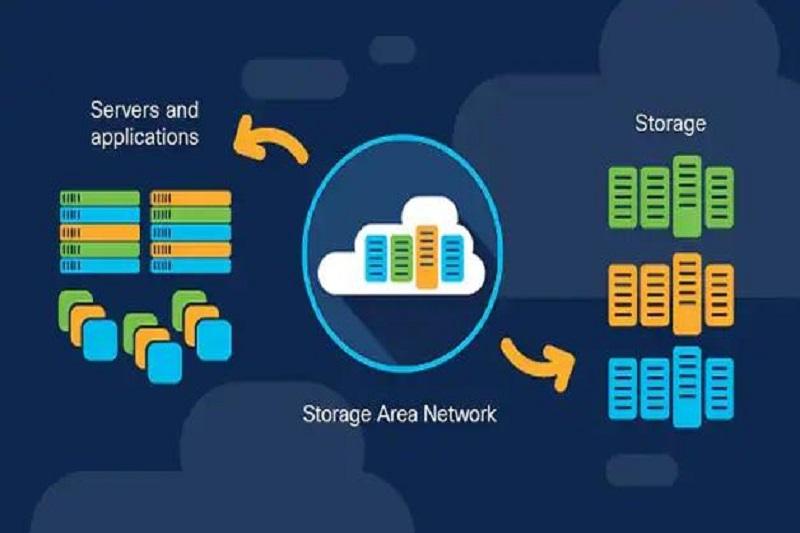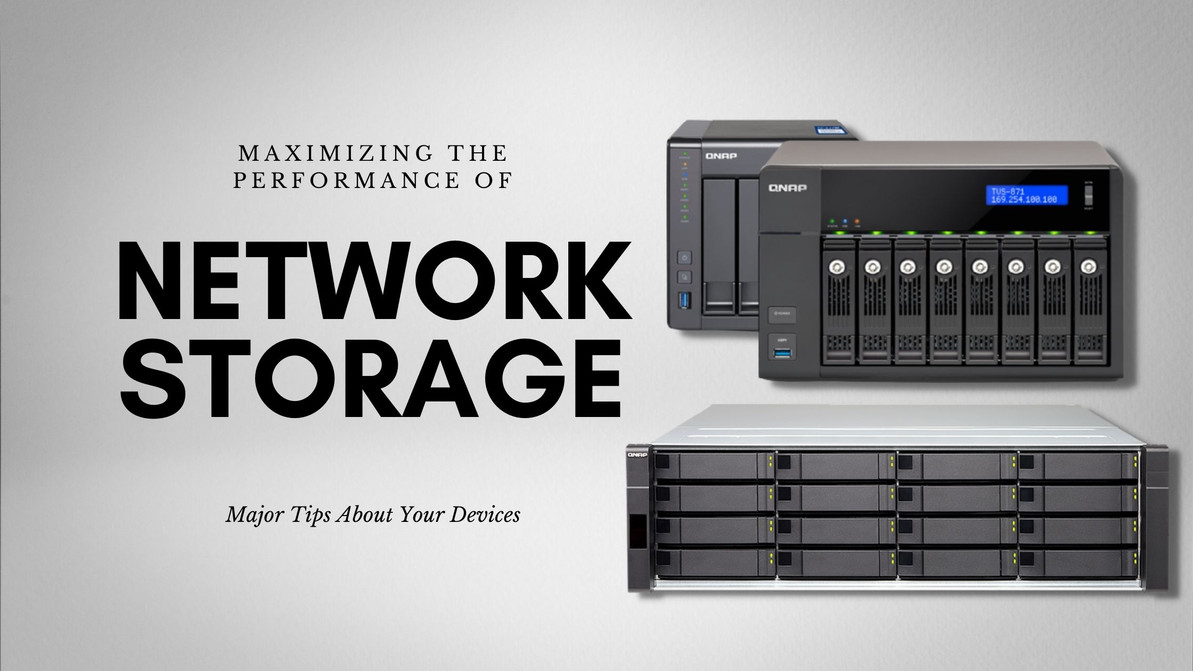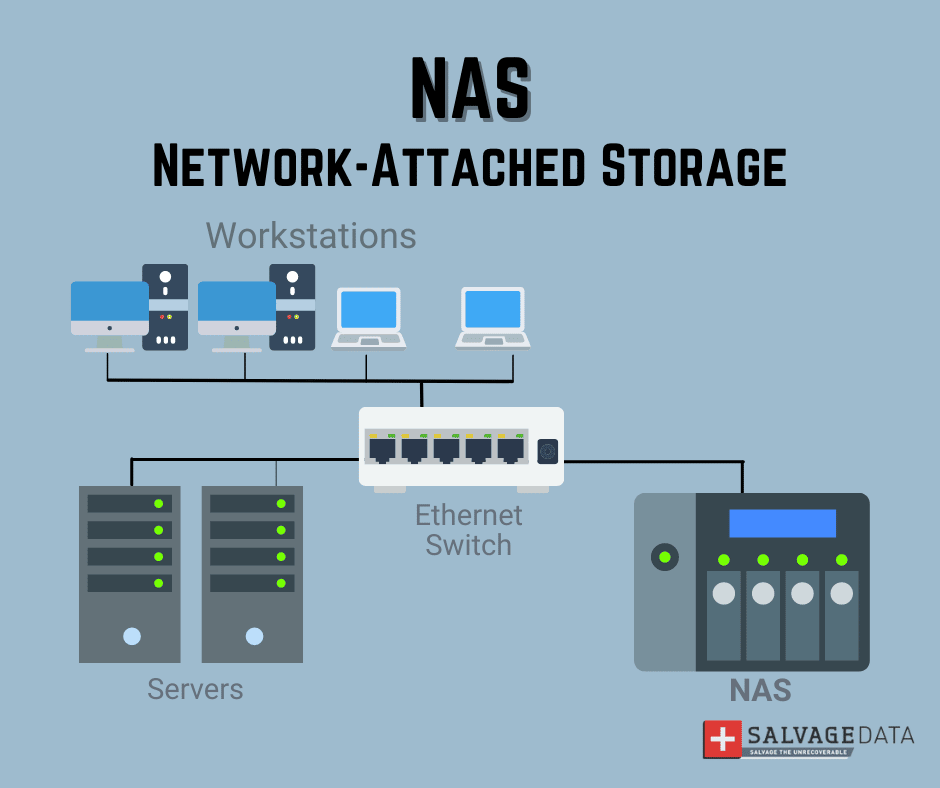What Is a Storage Network and What Key Features Does It Offer
A Storage Network Is A Computer Network That Provides Block-Level Access To Data Storage Media. SANs are used to access data storage devices such as disk arrays, tape archives, etc., so the devices appear as local storage media to the server operating system or clients.
Storage networks are mainly implemented in enterprise information technology environments and data centers, and provide a scalable solution focusing on redundancy of storage space so that computers, servers, and other end devices in a shared network can access storage tanks.
SANs provide a specialized, high-speed network that provides network access to storage devices. SANs usually consist of hosts, switches, storage components, and devices interconnected using various technologies, topologies, and protocols.
A SAN switch is at the heart of most SANs that transports storage data traffic between servers and shared storage pools. A SAN switch connects multiple host servers, implementing a LAN through a SAN.
Shared storage networks connect one or more storage resources in a network so that they can be accessed most simply; all clients (users or equipment) can simultaneously access the storage space they need using the appropriate bandwidth.
Access Benefits of using a SAN include improved performance, reliability, availability, greater collaboration between clients, simplified IT management tasks, more accessible backups for compliance and disaster recovery purposes, and more.
What are the advantages of network storage?
Storage Area Networks ( SANs ) offer many advantages to businesses, including simple storage management, mirroring of disks, the low long-term cost associated with storage management, access to immediate and real-time information, the ability to set up an independent network that allows increasing the storage capacity in the simplest form, the ability to store hundreds of terabytes of data using any number of storage devices, etc.
In addition, network-attached storage ( NAS ) has other added benefits, such as central file system storage and access, automatic local cloud backup, easy setup and use, reduced hardware costs, and space-saving capabilities.
Finally, the storage network implementation’s other benefits include more reliable backup, improved storage space utilization, simple data recovery, intelligent and accurate information management, user-friendly access to files from any device or location, etc.
How is the storage network different from common mechanisms?
Storage networkRegional is a dedicated, high-speed network that provides access to block-level storage. Typically, this network manages structured workloads such as databases and is exposed to client operating systems as a disk. SANs use a Fiber Channel connection, while network-attached storage (NAS) mechanisms connect to the network via a standard Ethernet connection.
SAN stores data at the block level, while NAS stores data based on a file-based storage mechanism. Today, various protocols are used in connection with storage area networks, the most important of which are SCSI (Small Computer System Interface), SATA (Advanced Serial Attaching Technology), etc.
In contrast, NAS is a single storage device that provides files over Ethernet, is less expensive to implement than SAN, and has a simple setup and deployment mechanism. At the same time, SAN is a network of multiple storage devices that is more expensive.
And it is more complicated. From a user perspective, the most significant difference between NAS and SAN is that NAS devices provide shared storage as network-mounted volumes and use protocols such as NFS and SMB/CIFS, while SAN-attached disks act as local drives. Appear to the user.
What companies are storage hotspots right for?
Large companies and organizations are typically better off considering SAN implementations than NAS because SANs are faster, more scalable, and respond appropriately and quickly to all mission-critical applications. In addition, SAN provides users with a quick data access solution and can support hundreds of users simultaneously.
For example, time-sensitive I/O applications such as Oracle Database and Microsoft SQL require the high-level performance that only SANs can provide.
NAS is suitable for extensive file processing, ETL (extract, transform, load), intelligent data services such as automatic layering, analytics, searchable active archives, high availability, and unstructured data storage such as footage captured by CCTV cameras. On the other hand, NAS is a single storage device that allows access to files over Ethernet, is inexpensive, and is straightforward to set up. Therefore, it is often used for homes and small to medium-sized businesses.
In summary, while SAN and NAS are used in enterprise storage solutions, large enterprises should choose SAN because it offers faster performance, scalability, and availability for all business-critical applications than NAS. Provide.
Functional mechanism of the storage network
SANs are essential in improving client performance by providing a specialized, high-speed network that allows devices to access storage space. SANs consist of hosts, switches, storage devices, and interconnected media using various technologies, topologies, and protocols. The SANs may span multiple sites and play an essential role in an organization’s business continuity management (BCM) activities.
SAN uses connections like Fiber Channel (FC), Ethernet, and InfiniBand. Meanwhile, Fiber Channel Protocol (FCP) has become the standard connection for enterprise-scale SANs. Fiber Channel over Ethernet (FCoE) is a protocol for routing FC packets over Ethernet. This protocol can improve the flexibility and simplification of the SAN infrastructure.
In addition, there is the Internet Small Computer System Interface (iSCSI), a standard IP-based protocol for connecting data storage devices on a network and transferring data using SCSI commands. Using the iSCSI protocol with IP-based SANs enables clients to access the storage network using the same technologies.
SANs are block-based storage systems that use a high-speed architecture that connects servers to logical disk units (LUNs). A LUN is a range of blocks created from a shared storage pool and presented to the server as a logical disk. In this case, the server can partition and format blocks, usually based on a file system, to keep data on the LUN precisely the same as local disk storage.
What are some examples of businesses using SAN or NAS?
Now that we know that Storage Area Networks (SAN) and Network Attached Storage (NAS) are the two main types of storage systems used by businesses in the IT world, it’s time to look at some examples from large companies.
Let’s say they use the storage area network for this purpose. Typically, commercial enterprises and large businesses use SANs for faster access to information, greater scalability, and low-latency response to requests.
Large companies such as Tintri, Nimble Storage, NetApp, IBM, Hitachi Data Systems, Dell EMC ScaleIO, etc., use storage area networks today. On the other hand, storage or NAS is suitable for medium and small businesses that intend to store and share files.
Businesses with high-performance requirements, such as databases or e-commerce websites, are prime SAN customers. The critical thing to remember here is that if you have a medium-sized business (SMB) that uses traditional storage systems and is now looking for a SAN, you must do some basic needs assessment first. For example, if you see signs like performance issues and increasing demand for scalability, it’s time to migrate from NAS to SAN.
Large companies with high-performance requirements should consider using a SAN, while medium/small businesses that need storage and file-sharing capabilities can easily use a NAS.
FAQ
What is a storage (area) network (SAN)?
A SAN is a dedicated, high-speed network that connects servers to storage devices at the block level, making the storage appear like a local disk.
Which protocols do storage networks use?
Common protocols include Fibre Channel (FC), iSCSI, FCoE, and FC‑NVMe for fast, reliable block‑level transport.
What are the main benefits of using a SAN?
It offers high performance, scalability, centralized pool of storage, data redundancy, multi‑path access, and strong support for virtualization and backup.


